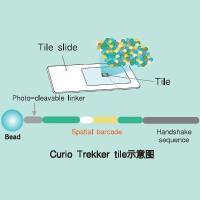Sequence Mapping of Combinatorial Libraries on Macro- or Microarrays: Experimental Design of DNA Arrays
互联网
437
Sequence mapping consists in the characterization of a set of sequence segments in a library of related genes or PCR products. This procedure can be applied to analyze natural sequence variants, for example allelic distribution of human genomic sequences for disease, drug metabolism prediction, or sequence associations in combinatorial libraries of genes used in directed evolution. Sequence mapping of combinatorial libraries have a lot of potential interests including diversity characterization, bias and artifact analysis, library improvement by robotic equalization, and population-wide structure-function analysis (1 ,2 ). Sequence mapping differs from classical sequencing by the fact that prior knowledge of possible sequence alleles is generally requested. Nevertheless, at the limit of the technique, true resequencing can be performed with single-base resolution. A second advantage of sequence mapping over sequencing is that the former is expected to have high-throughput and low-cost capabilities suitable for routine applications with libraries, whereas the latter is more dedicated to characterizing individual clones. Our goal was to develop low-cost, sensitive, and rapid sequence mapping methods. The first method describes a dot-blot based approach and is adapted to libraries containing less than 1000 clones. The second one, more sensitive, is microarray based and adaptable to larger library characterization. The sequence characterization of a combinatorial library of mosaic P450 in pYeDP60 (3 ) built from the human CYP1A family members (CYP1A1 and CYP1A2 ) is used to illustrate the techniques.









